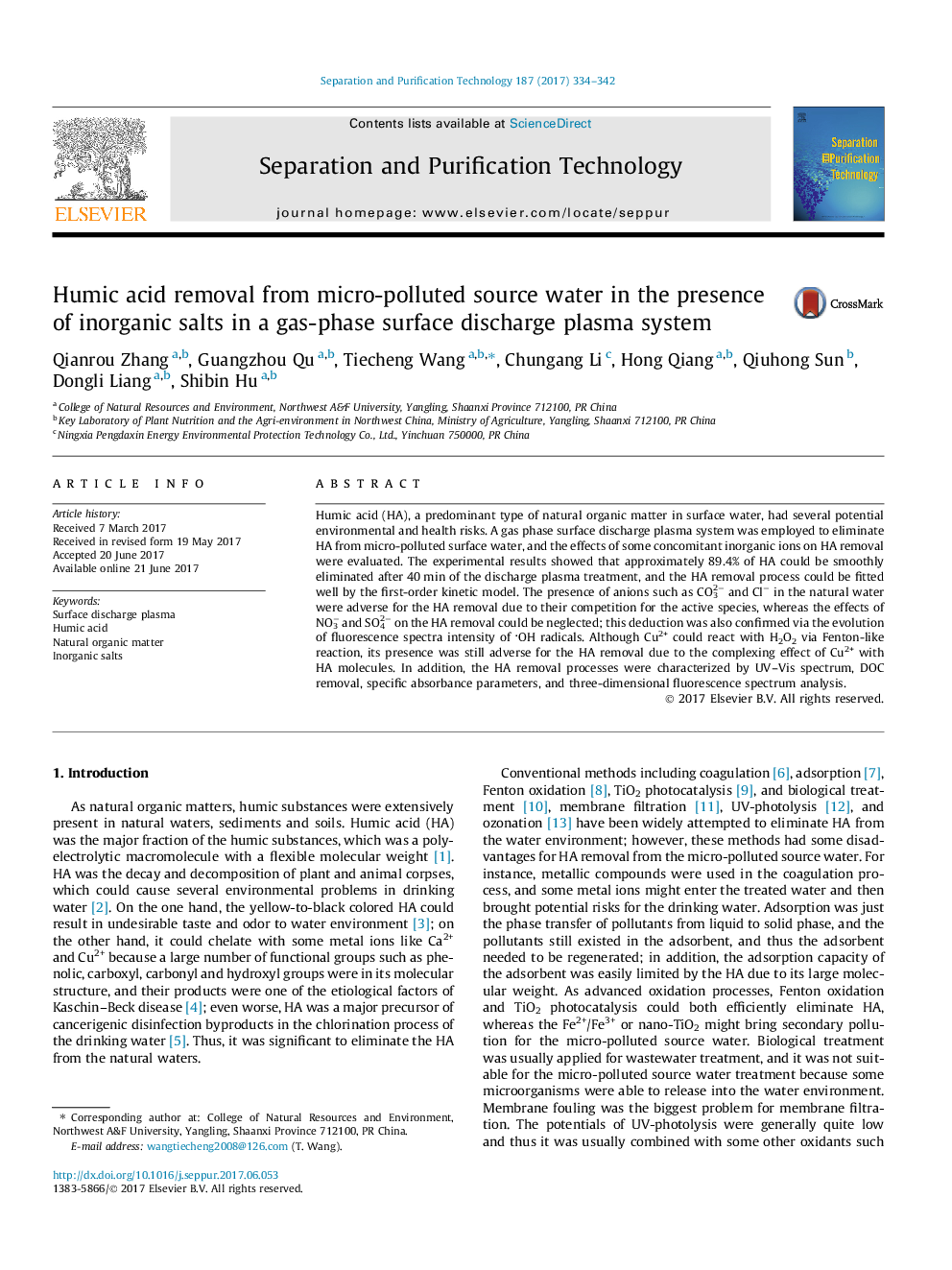| Article ID | Journal | Published Year | Pages | File Type |
|---|---|---|---|---|
| 4989580 | Separation and Purification Technology | 2017 | 9 Pages |
Abstract
Humic acid (HA), a predominant type of natural organic matter in surface water, had several potential environmental and health risks. A gas phase surface discharge plasma system was employed to eliminate HA from micro-polluted surface water, and the effects of some concomitant inorganic ions on HA removal were evaluated. The experimental results showed that approximately 89.4% of HA could be smoothly eliminated after 40Â min of the discharge plasma treatment, and the HA removal process could be fitted well by the first-order kinetic model. The presence of anions such as CO32â and Clâ in the natural water were adverse for the HA removal due to their competition for the active species, whereas the effects of NO3â and SO42â on the HA removal could be neglected; this deduction was also confirmed via the evolution of fluorescence spectra intensity of OH radicals. Although Cu2+ could react with H2O2 via Fenton-like reaction, its presence was still adverse for the HA removal due to the complexing effect of Cu2+ with HA molecules. In addition, the HA removal processes were characterized by UV-Vis spectrum, DOC removal, specific absorbance parameters, and three-dimensional fluorescence spectrum analysis.
Related Topics
Physical Sciences and Engineering
Chemical Engineering
Filtration and Separation
Authors
Qianrou Zhang, Guangzhou Qu, Tiecheng Wang, Chungang Li, Hong Qiang, Qiuhong Sun, Dongli Liang, Shibin Hu,
